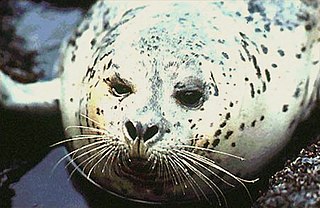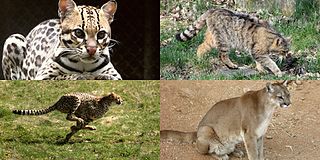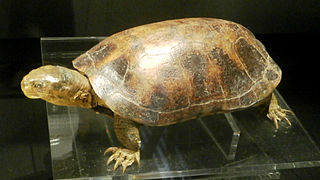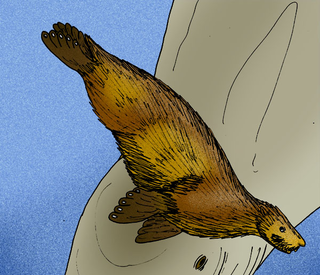
The leopard cat is a small wild cat native to continental South, Southeast, and East Asia. Since 2002 it has been listed as Least Concern on the IUCN Red List as it is widely distributed although threatened by habitat loss and hunting in parts of its range.

Urocyon is a genus of Canidae which includes the gray fox and the island fox. These two fox species are found in the Western Hemisphere. Whole genome sequencing indicates that Urocyon is the most basal genus of the living canids. Fossils of what is believed to be the ancestor of the gray fox, Urocyon progressus, have been found in Kansas and date to the Upper Pliocene, with some undescribed specimens dating even older.

Nehemiah Grew was an English plant anatomist and physiologist, known as the "Father of Plant Anatomy".

George Kearsley Shaw was an English botanist and zoologist.

James Francis Stephens was an English entomologist and naturalist. He is known for his 12 volume Illustrations of British Entomology (1846) and the Manual of British Beetles (1839).

Phoca is a genus of the earless seals, within the family Phocidae. It now contains just two species, the common seal and the spotted seal. Several species formerly listed under this genus have been split into the genera Pusa, Pagophilus, and Histriophoca. Until recently, Phoca largha has been considered a subspecies of Phoca vitulina but now is considered its own species. For this reason, the fossil history of the genus is unclear, and it has formerly been used as wastebasket taxon for a number of fossils of uncertain affinity.

Felinae is a subfamily of the Felidae and comprises the small cats having a bony hyoid, because of which they are able to purr but not roar. Other authors have proposed an alternative definition for this subfamily, as comprising only the living conical-toothed cat genera with two tribes, the Felini and Pantherini, and excluding the extinct sabre-toothed Machairodontinae.

The rufous dog-faced bat, is a bat species found in Argentina, Brazil, Colombia, Guyana, Peru and Suriname.

Pusa is a genus of the earless seals, within the family Phocidae. The three species of this genus were split from the genus Phoca, and some sources still give Phoca as an acceptable synonym for Pusa.

Brants's whistling rat or Brants' whistling rat is one of two species of murid rodent in the genus Parotomys. It is found in Botswana, Namibia, and South Africa where its natural habitats are subtropical or tropical dry shrubland and pastureland. It was first described in 1834 by the Scottish zoologist Andrew Smith who named it in honour of the Dutch zoologist and author Anton Brants.

The Papuan sheath-tailed bat is a species of bat in the family Emballonuridae which occurs at the Cape York Peninsula and New Guinea. The poorly known species hunts in open forests for night flying insects.

Phrynoidis juxtasper, also known as the giant river toad or Borneo river toad, is a species of toad in the family Bufonidae. It is found in Borneo and Sumatra (Indonesia) below 1,600 m (5,200 ft) asl. Prior to its species description, it was confused with Phrynoidis asper.
The Palawan toadlet or white-striped flathead toad is a species of toad in the family Bufonidae. It is endemic to Palawan, the Philippines.
Parictis is an extinct arctoid belonging to the family Subparictidae.

The yellow pond turtle, is a medium-sized, semiaquatic turtle in the family Geoemydidae. This species has a characteristic broad yellow stripe extending behind the eye and down the neck; the carapace ranges in color from grayish brown to brown, and the plastron is yellow or orange with black blotches along the outer edges. It is native to East Asia, ranging from central Vietnam and Laos, north through the coastal provinces of south and central China, with insular populations known from Taiwan, Hainan and the Ryukyu Islands. Although populations in the southern Ryukyus are thought to be native, populations in the northern and central Ryukyus, as well as central Japan, are believed to have been introduced as a result of imports from Taiwan.
The Astoria Formation is a geologic formation in Washington state & Oregon. It preserves fossils dating back to the early to middle Miocene.

Pinnipedimorpha is a clade of arctoid carnivorans that is defined to include the last common ancestor of Phoca and Enaliarctos, and all descendants of that ancestor. Scientists still debate on which lineage of arctoid carnivorans are the closest relatives to the pinnipedimorphs, being more closely related to musteloids.














